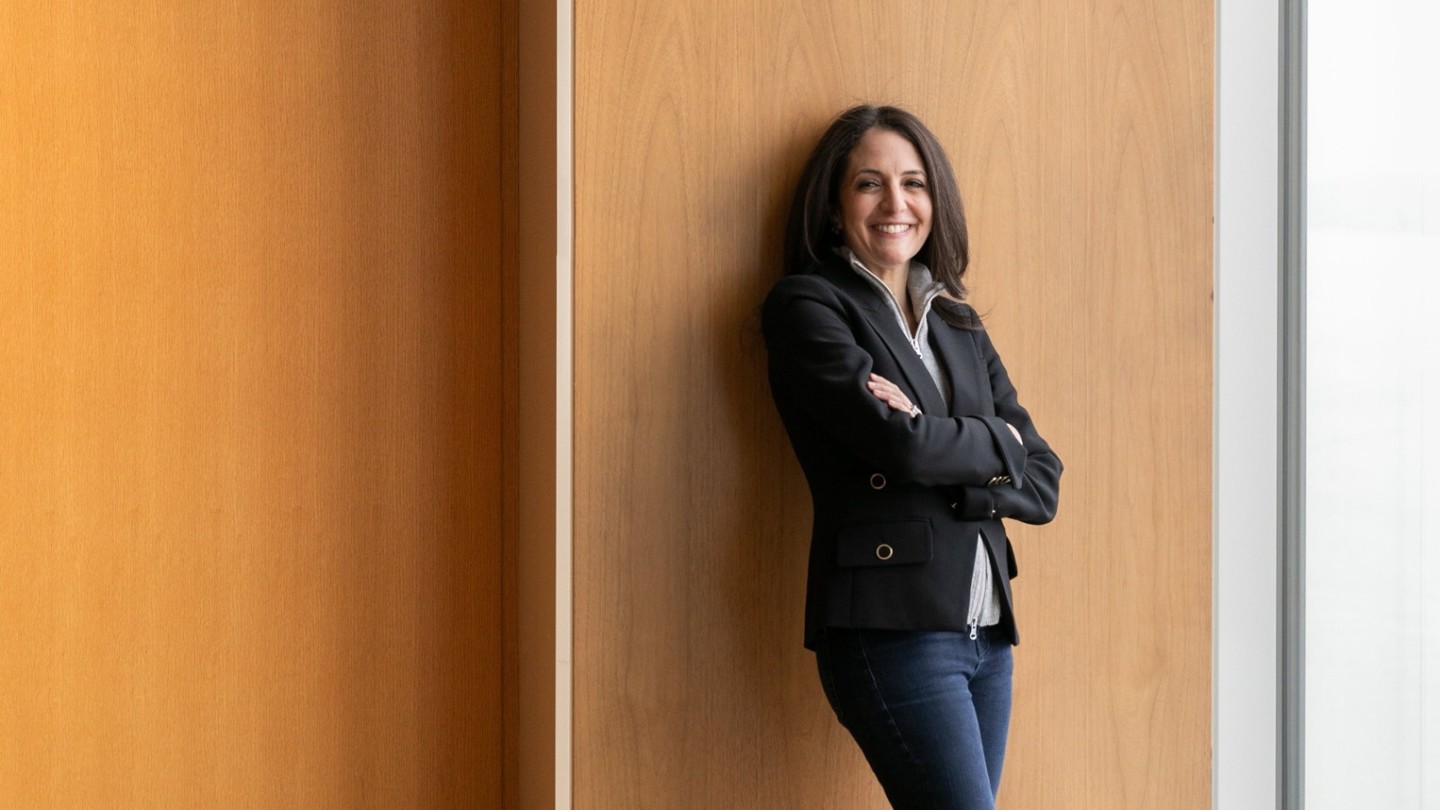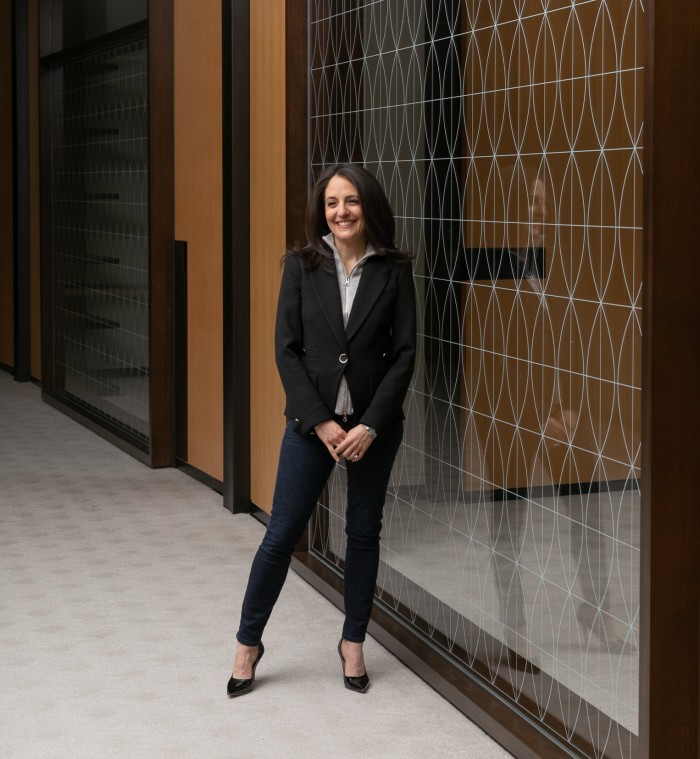Stephanie Cohen: zigzag steps to the top on Wall Street

Roula Khalaf, Editor of the FT, selects her favourite stories in this weekly newsletter.
The day before Stephanie Cohen — one of Goldman Sachs’s most senior executives — speaks to the Financial Times, her boss, David Solomon, hangs a “for sale” sign over part of the business she runs.
“For my entire career, I’ve embraced challenges and focused on the impact of a business rather than an arbitrary notion of its size,” the head of Goldman’s Platform Solutions business says, referring to Solomon’s announcement that the bank was exploring “strategic alternatives” for some of her division.
Platform Solutions, home to Goldman’s credit card, transaction banking and fintech businesses, was born of a desire to wean Goldman off the volatile trading and investment banking revenues it is best known for.
But the diversification play has lost $3bn in the past three years, making it an obvious target for refinement when Solomon unveiled his plans for Goldman’s next era at the 154-year-old bank’s second-ever investor day.
Cohen — a bubbly 45-year-old who wears trainers and tilts back on her chair during an interview as though she is about to bounce right out of it — was appointed to lead Platform Solutions last year. That puts her in the eye of the storm now, as Goldman tries to convince Wall Street it can get its mojo back.
It is an unlikely situation for the Chicago native. Plan A was to be a figure skater, Plan B was to join a bank on the way to becoming a lawyer. Instead, she has hopped around almost every corner of Goldman — and repeatedly taken on roles that at least some of her mentors advised her against.

Cohen’s route into banking was Goldman’s mergers and acquisitions (M&A) team in New York, where she started as an analyst in 1999. She recalls how she conformed to the dress code of her male peers by chance, because she preferred muted colours anyway. And, while it was more usual then to be a lone female voice on a call, that was not always a bad outcome. “If you were doing a good job, you were memorable,” she says.
She began to think of making partner at Goldman as the career equivalent of her one-time dream of skating at the Olympics.
Her first big career pivot was nine years in (see ‘milestone dates’, below), when a job came up in the division that scrutinises bankers facing potential legal and ethical issues with their deals. Cohen consulted the advisers that she calls her own “board of directors”, asking them whether she should leave a client-facing job. She found they were split 50/50.
“I did what I advise lots of people to do, which is get all the information you can possibly get, [and] write out the pros and cons,” she says. “And then . . . for a couple of days in a row, the minute you wake up in the morning, [ask yourself] what is your first thought on whether or not you should do it?”
Cohen decided to take the job, and returned to M&A a year later, as a managing director. By 2015, she headed the global financial sponsor M&A group. Then, in 2017, “happily” running that business, she changed course again when she was asked to become chief strategy officer.
At that time, the bank was struggling with falling and volatile revenues from its traditional businesses. “That was another instance where a bunch of people told me . . . ‘no, no, no’,” Cohen says. But she took the job anyway, at least in part because she was allowed a blank sheet to define the role. She also set a time limit of two-and-a-half years.
“I didn’t say yes all the time,” she says, reflecting on her career decisions. “You have to believe you have a skillset that’s going to be transferable [to that job] . . . and that you’re going to enjoy it. It’s hard to be great at things that you don’t enjoy.”
That is why she argues that people should regularly ask themselves whether they like the job, or are learning something new: “If you decide to be here, and decide to do what you’re doing, you own it.”
In her own case, she says, “I decided to be at Goldman Sachs many, many, many times.”
Cohen credits Goldman’s early female partners, including Alison Mass and Gwen Libstag, as blazing the trail for women like her, and says she has felt “very responsible” for helping other women to advance. In strategy, she says, “we made it clear that diversity was a strategic imperative” that should be talked about “in the same room as revenue and market share and growth”.
After her stint as chief strategy officer, she became co-head of Goldman’s consumer and wealth business, a fast-growing area that was central to plans to diversify Goldman’s streams of revenue.
She was a managing director when her son was born in 2012, and a partner when she had her daughter, who is now six. When she and her husband planned to have children, he asked: “Which one of us is going to quit?” Cohen’s answer was: “Why is one of us going to quit?”
Her husband’s question was one many people ask when it comes to families and work, she says.
“People tend to proactively solve for a problem that’s not actually there,” she argues. She persuaded her husband that they could both keep their careers. He has since left Goldman to run his own fund.
Cohen is pragmatic about the dynamics of combining career and family life. She has not done her own laundry “since I was an analyst”. And she does not have “the most exciting social life”, prioritising athletic weekends with her kids over evenings at fancy restaurants. When she helps out at their schools, it is when the children are also involved.
“One thing someone told me, which I thought was awesome advice, was that when you leave the house in the morning, your kids don’t feel bad about it — you feel bad about it,” she says.
Milestone dates
1999
Joins Goldman Sachs as M&A analyst
2008
Switches from M&A to conflicts and business selection
2009
Returns to M&A as a newly minted managing director
2011
Appointed global head of general industries and global co-head of industrials M&A
2014
Joins Goldman’s partnership
2015
Becomes head of global financial sponsor M&A, appointed to “build a new business”
2017
Appointed to chief strategy officer, at a critical time for the investment bank. A year later, joins Goldman’s executive committee as an ex officio member
2020
Becomes co-head of the consumer and wealth management division and a full member of the group management committee
2022
Switches to head platform solutions division, following a significant reshuffle
Comments